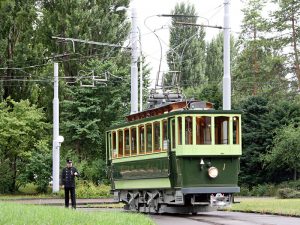 Getting more people on public transport makes it more cost effective and sustainable. If the goal is more people using buses, trams and trains the first step has to be finding out why people aren’t using them. Once we know people’s reasons, how we respond to them determines what happens next.
Getting more people on public transport makes it more cost effective and sustainable. If the goal is more people using buses, trams and trains the first step has to be finding out why people aren’t using them. Once we know people’s reasons, how we respond to them determines what happens next.
Paul Mees, a passionate advocate for public transport, was interviewed in 2011 on The Law Report on ABC Radio National. He explained that a few years ago Zurich experienced a downturn in public transport use, particularly at night. People in Zurich, Mees said ‘…began to complain that they felt unsafe on trains at night, largely because of antisocial behaviour, not because of actual crimes.’
In his interview Mees went on to say that in places like Australia, the response from public transport officials would most likely be to dismiss people’s feelings and say to them ‘look at the crime figures, you’ve got nothing to worry about.’
Mees described that in Zurich, which had very low crime figures for public transport, the officials took what might be seen as the extraordinary step of actively responding to the people and their feelings and as a result ‘…they put a conductor on every single train throughout the entire state of Zurich after 8pm every day of the year.’
In Zurich they had the wisdom to know that addressing people’s emotional needs was fundamental to getting people to use the public transport system. They could have taken the step of telling people the crime figures and why they were wrong to feel unsafe and then sat back and wondered why more people weren’t using public transport. Instead they saw that to get what they wanted – which was more bums on seats – they had to take seriously the reason why people didn’t want to sit down at all.
Conductors made people feel safe. It didn’t matter that crime figures showed they were already safe whether there were conductors or not. What mattered was if people felt safe they would catch the tram and if they didn’t they wouldn’t.
If we want to solve a problem there are three interdependent needs we have to consider. There is what we want to do. This is the substantive need we want to address. But there are two other vital needs we must grapple with as well. A procedural need or the how of how we go about dealing with what it is we want to do. And an emotional need or the how of how those we are dealing with, feel about matters.
Put very simply when we are solving problems if we haven’t gotten the how right or taken account of how people feel, then most likely the what won’t work. These three needs are represented by a model called the Satisfaction Triangle.
This blog is dedicated to exploring the Satisfaction Triangle, the way it can be used and providing real life examples that illustrate its application. Along the way we will consider El Nino forecasts, rates of sedation of children in MRIs, the cheerfulness of dogs, overseas aid projects that end up replicating previous failures, attitudes to stress and levels of stress and which affects mortality more, why music matters for literacy and numeracy and many other things besides.
So let’s go travelling with a triangle.
